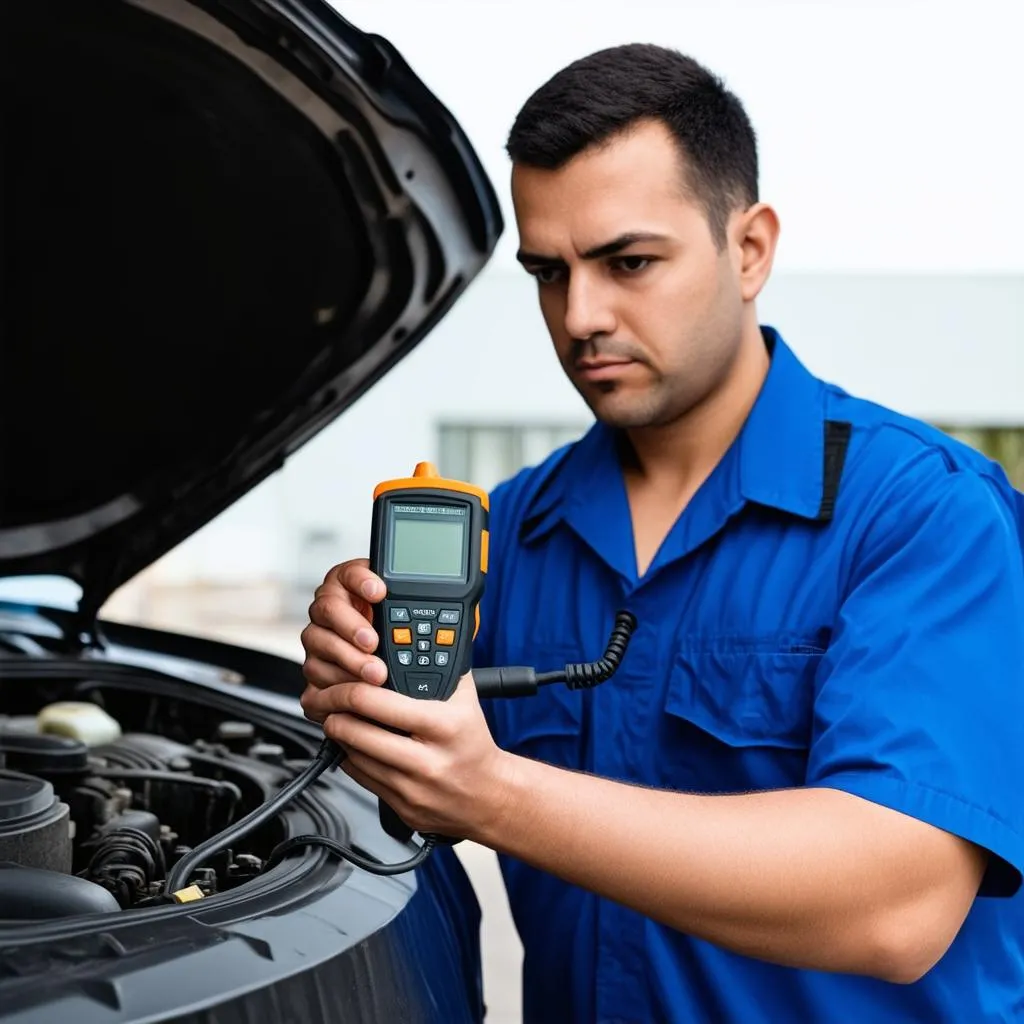Imagine this: you’re cruising down Route 66 in your Chevy Silverado, wind in your hair, classic rock on the radio, when suddenly, your “Check Engine” light decides to ruin the vibe. You pull over, grab your trusty OBD-II scanner, and bam – you’re greeted by the cryptic code “P0700.” What does it mean? Is your beloved Silverado about to transform into a Transformer gone wrong?
Don’t panic just yet! This scenario, while dramatic, is a common fear for many GM owners. The good news is, understanding the P0700 code is like learning a secret handshake – once you’re in the know, you’re in control.
What Does “Gm Obd P0700” Actually Mean?
In simple terms, the P0700 code signifies a “Transmission Control System (TCS) Malfunction.” Think of it as your car’s way of saying, “Hey, something’s not quite right with the gearbox.” This code itself doesn’t pinpoint the exact problem, but it acts as a red flag, urging you to investigate further.
From a mechanic’s perspective, this code is a starting point. “The P0700 is like a gateway code,” says John Miller, a seasoned mechanic with over 20 years of experience at a Chevrolet dealership in Dallas, Texas. “It tells me the problem lies somewhere within the transmission system, and I need to do some digging to find the culprit.”
Getting to the Root of the Problem
So, the P0700 code is just the tip of the iceberg. The real question is: what’s causing the TCS malfunction? Here are some common culprits:
- Faulty Transmission Range Sensor: This sensor tells your car’s computer what gear you’ve selected. If it’s faulty, your car might hesitate when shifting or even stall.
- Worn-Out Transmission Solenoids: These little guys control the flow of transmission fluid. When they wear out, shifting can become erratic and unpredictable.
- Transmission Fluid Issues: Low fluid levels or dirty fluid can wreak havoc on your transmission, leading to the dreaded P0700 code.
- Wiring Problems: A short circuit or damaged wiring harness can disrupt communication between the transmission control module and the rest of the car.
Common Questions About the P0700 Code:
- Is it safe to drive with a P0700 code? While you might be able to limp along for a short distance, it’s highly recommended to get it checked out ASAP. Driving with a transmission problem can lead to further damage and costly repairs.
- Can I fix the P0700 code myself? Depending on your mechanical skills and the specific problem, you might be able to handle some repairs. However, it’s often best to leave it to the professionals, especially if you’re dealing with complex transmission issues.
 Car Transmission System
Car Transmission System
Taking Action: What to Do When P0700 Strikes
- Read the Code: Use an OBD-II scanner to retrieve the specific P0700 code and any accompanying codes.
- Research: Understand the potential causes related to the codes you’ve retrieved.
- Inspect: Check your transmission fluid level and condition. If it’s low or dirty, it’s time for a change.
- Seek Professional Help: If the problem persists or you’re not comfortable tackling transmission repairs, take your car to a qualified mechanic.
 Mechanic Diagnosing Car Problem
Mechanic Diagnosing Car Problem
Don’t Let P0700 Rain on Your Parade
Remember that terrifying scenario on Route 66? It doesn’t have to end in disaster. The P0700 code, while intimidating, is just a call to action. By understanding what it means and taking the necessary steps, you can keep your GM vehicle running smoothly for miles to come.
Need help diagnosing your car’s problems? Contact us on Whatsapp at +84767531508 for expert advice on diagnostic tools and software. Our team of auto repair specialists is available 24/7 to assist you.
Want to learn more about other common OBD-II codes and how to decipher them? Check out our articles on 2010 Kenworth T2000 OBD Port and GMC OBD-2 U1A48.